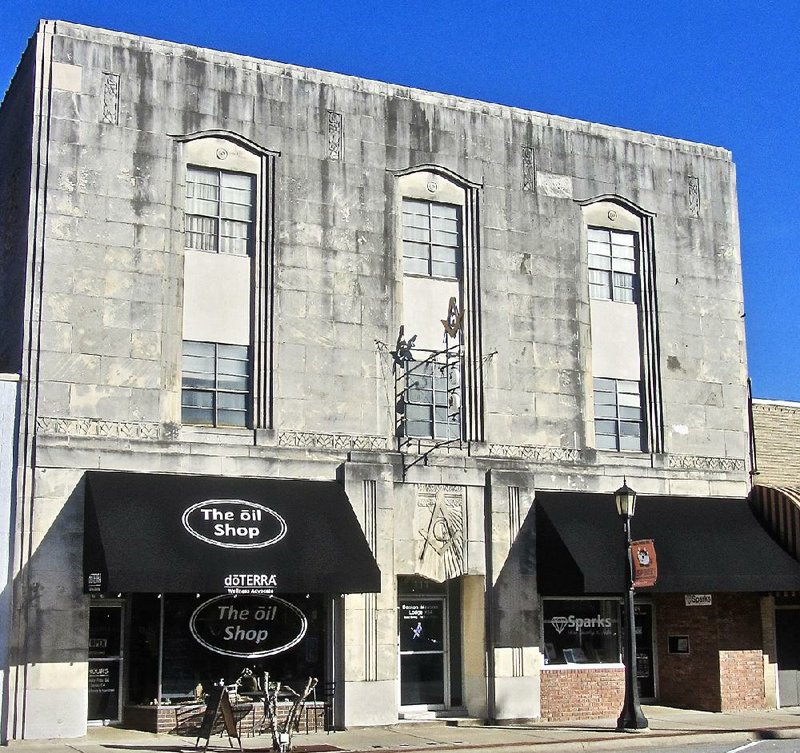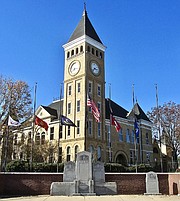BENTON -- For motorists zooming along Interstate 30's 6-mile stretch through Benton, the landscape zips by in a blur of roadside commerce, including a potpourri of brands that could be found in Anytown USA.
There are umpteen chances to stop for food, lodging, gasoline, shopping and other travel needs and desires. Colorful billboards and smaller signs tout services as diverse as auto dealers, churches, hardware shops, shoe stores and personal-injury lawyers. Business looks to be thriving on the I-30 corridor running through the Saline County seat.
Amid the traffic's clamor, little seen out the window gives many hints of Benton's long and notable history. That requires a detour -- a worthwhile one -- just a short hop off I-30's Exit 117. A national historic district of 53 buildings sits less than a mile south of the interstate. It is the downtown heart of a community established in 1833, three years before Arkansas became the 25th U.S. state.
An ideal starting point for a walking tour of the Benton Commercial Historic District is Saline County Courthouse, built in 1902. The oldest structure in the historic district, the two-story building with its dominating corner clock tower was designed in Romanesque Revival style by prominent Little Rock architect Charles L. Thompson for the handsome sum of $31,000.
The courthouse's notable Romanesque Revival features include rounded arches above window and door openings. A lobby inside displays a vivid mural by Julius Woeltz titled Bauxite Mining.
One of 19 surviving works originally in U.S. post offices around Arkansas, it was part of a federal New Deal program during the Great Depression of the 1930s. A half-dozen brawny men are shown laboring to mine locally abundant bauxite, the ore for aluminum.
A helpful online guide to the district can be printed out in advance at arkansaspreservation.com. Its contents are based on a tour conducted a few years ago by Rachel Silva as part of the Walks Through History project of the Arkansas Historic Preservation Program.
Strolling the entire 53-building route from the courthouse takes in blocks of Main, South, East, Sevier and Market streets. Until the early 1920s, that walk could be a challenge to shined shoes and long skirts. Before then, the streets were gravel and dirt, although downtown sidewalks were paved. Concrete pedestrian crossings went from corner to corner at intersecting streets.
Other buildings of particular note in the district include the Royal Theatre and the International Order of Odd Fellows Building
The Royal Theatre, 111 S. Market St., was opened in 1920 during the last decade of the silent-movie era. In 1949, it got a fresh marquee and "Royal" sign transferred from the dismantled Royal Theatre in Little Rock. Jerry Van Dyke bought the property in 1996 and turned it over to a community-theater company, now the Royal Players.
Independent Order of Odd Fellows Building, 123 Market St., was built in 1930. No longer used by the lodge, its facade bears intriguing symbols. Three links of a chain and the letters "F.L.T." below it stand for the fraternity of friendship, love and truth. The engraving of an eyeball symbolizes the all-seeing eye of the Almighty.
A welcome 21st-century intruder into the commercial historic district is a vast and colorful mural on the wall of the Bell Building, 102 W. South St. Created in 2014 by artists Dianne Roberts and Mark Davey, it portrays scenes from Benton's history, going as far back as the American Indians who originally lived around here.
And just beyond the district's boundary, two buildings offer glimpses of 19th-century Benton. Gann Museum, 218 S. Market St., is apparently the only structure anywhere in the world made from bauxite. Completed in 1893, the building was constructed as their doctor's home by patients who could not afford to pay him.
Said to be the oldest surviving brick structure in Saline County, the Shoppach House at 508 N. Main St. was built by a German immigrant in 1852. It housed five generations of the Shoppach family before eventually becoming property of the Saline County Art League. It makes a long-long-ago final stop before returning to the I-30 race track.
For information, contact Benton Area Chamber of Commerce, 607 N. Market St., Benton. Visit bentonchamber.com or call (501) 860-7002.
Style on 11/12/2019

